Rebuild The Domes
Joint city-county-state effort should rebuild domes and maximize its tourism potential.
The Mitchell Park Three Domes Conservatory is a jewel of our Milwaukee parks and tourism system. Attendance has been up in recent years, aided by a highly successful winter farmers market and creative community events. In the days of higher population and stronger government budgets in the City of Milwaukee, the number of Domes visitors was two or three times greater than today.
Having said that, today’s annual visits of about 250,000 can and should be able to double over the next ten years with new infrastructure and services. It seems likely that the nearly 60 year old glass and steel is in need of total replacement.
With proper planning and a financing package that includes public resources and private sector support, my hope is that Milwaukee builds a destination that will draw people from every corner of the state as well as tourists from outside our borders.
A Rebuilding Plan Should Include:
- All Three Domes rebuilt on-site at Mitchell Park
- At least one Dome that is substantially larger in size to allow more opportunity for special events
- More physical space for tourists, visiting students, and someone wanting to enjoy their coffee and newspaper would greatly add to the experience of the Domes
- Improved parking and transit access
Importantly, this project should build on nearby success stories:
- Miller Park Stadium
- Menomonee Valley and the Hank Aaron State Trail
- Three Bridges Park
- Potawatomi Hotel and Casino
- The 5th Ward and Walker’s Point which has seen fast paced growth
The City of Milwaukee, county government, state government and the private sector should develop a tax increment financing (TIF) project that helps pay for the re-construction and directly connects the Domes location to a neighborhood-based economic revitalization effort (between S. 20th and 38th and from W. Pierce-W. Greenfield).
There is no question that the Domes is a regional and statewide attraction and contributes significantly to the adjacent neighborhoods. Given that the City has invested several hundred million dollars for the Bucks arena, the downtown streetcar, Northwestern Mutual Life expansion, the Pabst Brewery complex and Grand Avenue Mall, investing TIF dollars on Milwaukee’s near South Side is worth serious consideration as the community makes plans for the Three Domes.
Josh Zepnick D-Milwaukee, represents District 9 in the Wisconsin Assembly.
The Domes
More about the Future of The Domes
- Milwaukee County Board Reaffirms Commitment to Redevelopment and Restoration of Mitchell Park Domes - County Board Chairwoman Marcelia Nicholson - Sep 18th, 2025
- MKE County: Committee Cautiously Approves Domes Development - Graham Kilmer - Sep 3rd, 2025
- MKE County: Crowley Approves $30 Million for Domes - Graham Kilmer - Jul 30th, 2025
- County Executive Crowley, Chairwoman Nicholson Sign Legislation Approving Plan to Redevelop and Restore Mitchell Park Domes - David Crowley - Jul 30th, 2025
- MKE County: Board Approves $30 Million Commitment For Domes - Graham Kilmer - Jul 24th, 2025
- Why Mitchell Park Needs The Domes - Graham Kilmer - Jul 22nd, 2025
- MKE County: Parks Committee Backs $30 Million Domes Deal - Graham Kilmer - Jul 8th, 2025
- MKE County: Domes Plan Requires $30 Million From County - Graham Kilmer - Jul 2nd, 2025
- MKE County: Domes Project Lining Up Key Financing Component - Graham Kilmer - Feb 28th, 2025
- MKE County: Supervisor Adds Domes Project to 2025 Budget - Graham Kilmer - Oct 24th, 2024
Read more about Future of The Domes here
Political Contributions Tracker
Displaying political contributions between people mentioned in this story. Learn more.
Op-Ed
-
Unlocking Milwaukee’s Potential Through Smart Zoning Reform
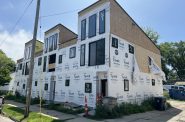 Jul 5th, 2024 by Ariam Kesete
Jul 5th, 2024 by Ariam Kesete
-
We Energies’ Natural Gas Plans Are A Mistake
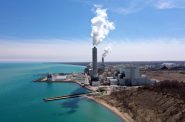 Jun 28th, 2024 by John Imes
Jun 28th, 2024 by John Imes
-
Milwaukee Needs New Kind of School Board
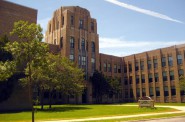 Jun 26th, 2024 by Jordan Morales
Jun 26th, 2024 by Jordan Morales


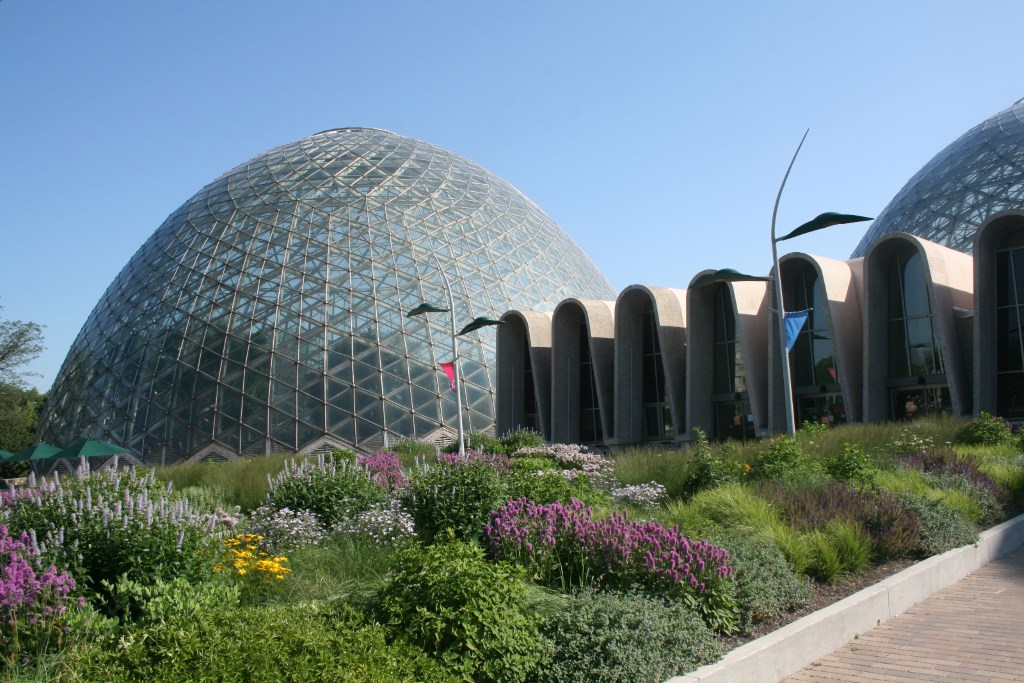
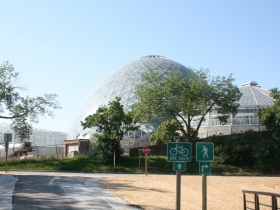
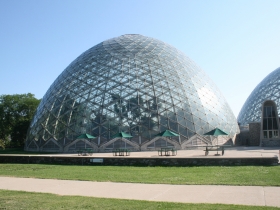
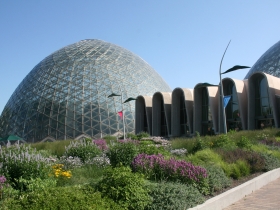
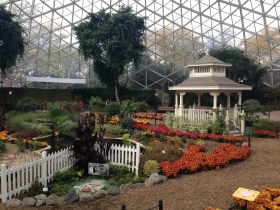
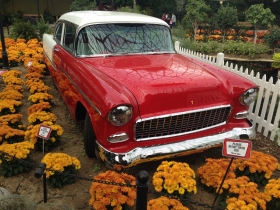
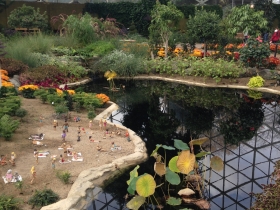


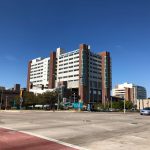
















Rep. Zepnick is clearly on the right track. His approach and other similar ones seek to change the mental model related to The Domes in two ways: first, don’t think of The Domes as a stand-alone. Think of them within the framework of broader community health and development. And, second, think big rather than small.
It is worth thinking of a successful initiative in three concentric circles. At the center are The Domes, then there is Mitchell Park, an underutilized asset, and, finally, linking the first two to the broader community.
The Domes have the potential to become a major destination for both local and out-of-town visitors. Even with minimal marketing, indifferent management and a range of physical issues, lots of people visit every year. The upside potential is enormous.
At the same time, Mitchell Park can become a destination for both leisure visitors and for active sports and activities. As other cities have learned, parks are a major asset, not a drain on the budget as some seem to see them. And, a key to success is to attract large numbers of people to a place that combines beauty, serenity for those seeking it, fun for others and personal safety for all. It is all doable. The world’s model: Central Park in New York, from an empty wreck to 40 million visitors for year.
Then the big payoff, the park and a targeted initiative as a vehicle for enhancing an already improving community by engaging institutions such as Journey House, Zilber, neighborhood associations and schools in making the geographic area defined by Rep. Zemnick Milwaukee’s “Garden District.” And, in the process, using the initiative to train a generation of environmentalists, horticulturalists and young community leaders.
Rep. Zemnicks’ financing ideas are also a solid platform to start building on. The best approach is to define a clear vision describing what The Domes, the park and the community could look like in five to ten years, and then address the problems of financing and structure as part of an action agenda. To think first of financing forecloses all kinds of possibilities, including never even opening the door for those who would want to fund the vision.
It would be nice if they could repave the roads around these gems. It’s embarrassing to have a tourist attraction that requires a Humvee to get to. Rebuild the Domes, yes. Make sure that getting to the landmark doesn’t detract from the experience.
Domes can be very good tourist attraction and use far more often if the city/county would give the promo out to other people.
It is a crime to see them disintegrate.
@Frank I wasn’t so sure about Rep. Zepnick’s financing plan. I’m not sure what the city could TIF that could create $70 million (replacement cost) in increment to do this? That doesn’t seem very clear to me. It would required a big big project or something very unusual to generate those sort of funds.
In addition to what Rep. Zepnick and others have already said, I would really encourage all players to think big.
For example, Milwaukee is home to companies, institutions and organizations that could be great potential partners:
–Johnson Controls is a leaders in smart buildings and climate control, and is already a partner with the Football Hall of Fame in creating its “smart village.” A new Mitchell Park (including the Domes and its other horticultural functions) could be a similar opportunity to showcase best technology, while more in the realms of conservation and environmental sustainability.
— Badger Meter. Ditto, a leader in flow instrumentation and monitoring. Let’s face it, if we’re talking plants, we’re talking water, sun and earth, and forward-thinking companies could see Mitchell Park as an investment and an opportunity.
— The Water Council. Play on Milwaukee’s growing involvement in freshwater sciences water technology. The Water Council could be or convene interested players around its Alliance for Water Stewardship. Mitchell Park should become an international model for water use and reuse.
— UWM School of Freshwater Sciences. Mitchell Park could be a great land-based laboratory for ongoing freshwater research and demonstrations.
— Marquette College of Education. Of course, other area universities have education programs, but Marquette’s is geographically close. Can Mitchell Park serve as an opportunity for teacher training, especially in the areas of botany and natural sciences?
— K-12 Students. I’m obviously not the first to say this, but every K-12 student in a four-county area should be visiting The Domes and Mitchell Park as part of their ongoing science education.
Tossing a few Easter eggs around a poinsettia is fine for play, and what family in Milwaukee hasn’t been to a wedding at The Domes, but what I’m getting at, here, is really creating a major, national center for ongoing technology, education and research. Everything The Domes has been for decades can remain, but Mitchell Park can be so much more.
Here’s an article on an updated report about costs to repair or replace the Domes.
Repairs are estimated at $14-54 million and rebuilding on site at $64 million. New structures in other shapes (and possibly at other locations) are roughly estimated at $50-70 million, not including design or site-prep costs.
http://urbanmilwaukee.com/2016/12/12/new-report-estimates-domes-cost/
The Milwaukeee Preservation Alliance has stated that historic tax credits may be available (through a collaborative arrangement, as is sometimes done with other not-for-profit structures) for a preservation solution. I have not heard of any public discussion about potential TIF financing for a new structure or any Domes-related project. However, talk so far has focused only on the conservatory, not any expansion or ancillary development.
The Domes Task Force will meet again on Wednesday, January 4 at 5:30 p.m. at the Domes. A review of the updated report will be on the agenda.
@ Dave Reid: Nowhere in my column does it say TIF would pay for the entire rebuild. The proposal calls for a multi-level partnership including private funding. Much like the Streetcar and Bucks Arena (neither pay property taxes btw), a City contribution to the Domes reconstruction would make sense in the context of a neighborhood renewal TIF adjacent to the South, that includes historic housing and commercial space begging for economic growth. A TIF that allocates a modest size amount to the Domes, with the bulk going to neighborhood commercial and residential redevelopment is completely doable from a public financing standpoint (I’ve run the numbers already). The uptick in property tax base, buoyed by an anchor tourist destination in close proximity to other major urban attractions, provides a unique opportunity to think outside the box, and pump up the utilization of Mitchell Park’s public space. Milwaukee’s South Side receives very little TIF and if we can subsidize apartments, grocery store on 1st and Greenfield for $5 million plus, one would think there’s room for the Clarke Square and Layton Boulevard West Neighborhoods to grow, especially given their sustained support from major private funders like the Zilber Foundation and others.
@ Virginal Small: ” I have not heard of any public discussion about potential TIF financing for a new structure or any Domes-related project. However, talk so far has focused only on the conservatory, not any expansion or ancillary development”
As of today, now you have! And hopefully this discussion will continue to expand and think, act creatively.
@Rep Zepnick. That makes much more sense. Though you don’t spell out how much the TIF part would be (I know it’s a rough idea but…) or what would generate the increment (need a site and a project/developer), which is the key part. For example, that $5 million TIF on 1st and Greenfield is tied to $47 million in private development (http://city.milwaukee.gov/ImageLibrary/Groups/cityDCD/business/TIF/2015-Reports/TID81.pdf). So interesting idea, but well the devil is in the details.
@Rep. Zepnick. Point taken. Urban Milwaukee is often the “public” forum where new ideas are presented and thoughtfully discussed.
Comments in this thread and elsewhere suggest that a broader Domes vision and initiative could evolve and gain momentum.
While TIF is a key funding mechanism it is not the only one. Visions/projects with diverse goals (public enrichment and economic development) often enlist private buy-in, whether by for-profits or nonprofits, as suggested above.
The South Side of Chicago offers models for redevelopment tied to arts and science, including through efforts spearheaded by the Garfield Park Conservatory and artist/entrepreneur/visionary Theaster Gates.
https://www.dnainfo.com/chicago/20160908/grand-crossing/theaster-gates-projects-get-10m-grow-grand-crossing-garfield-park
https://www.dnainfo.com/chicago/20160908/grand-crossing/theaster-gates-projects-get-10m-grow-grand-crossing-garfield-park
As an architect who has studied the history and construction of the Mitchell Domes, it would be a tragedy if they were to be torn down. These are crucially important buildings to Architectural history, both for their iconic form (they are the first conoidal glass domes ever built), and for their technological innovation (they are the first precast concrete component domes ever built – and quite possibly the only). Had they been properly maintained by the County for the past 50 years, we wouldn’t be in this predicament. For example, the concrete structure was spec’d to be repainted after 15 years. It appears as if they have never repainted once.
While other cities have their Buckminster Fuller Geodesics, we have Donald Grieb’s concrete and steel skeletons. I can confidently say that any contemporary replacement built within a budget proposed by the County will lack the vision and innovation of Grieb’s Domes – the design will be mediocre and we will ultimately regret it. But maybe they will be a better experience for “someone wanting to enjoy their coffee and newspaper”.
You don’t need domes when you have Frank Lloyd Wright. The Master and greatest architect who ever lived.
The agenda and docs for the Wednesday, Jan. 4 meeting of the Domes Task Force is posted at this link:
https://milwaukeecounty.legistar.com/MeetingDetail.aspx?ID=523865&GUID=4E0F0142-7120-4749-9876-632068A6FCF8&Search=
All of the comparable projects in the Graef presentation and even some discussed here have one thing that the Domes do not. Autonomy from the government. The Domes are owned by Milwaukee County. Step one should be getting the facility out of County hands and into a non-profit or foundation dedicated to the preservation of the facility. The demands upon the county are too great and the Domes can never be the priority commenters here believe it deserves to be.
@Jeremy,
Your point is well taken that nonprofits are playing major roles in helping to rejuvenate public spaces nationwide. Nonetheless, ownership of park facilities generally remains public and a nonprofit partners with a governmental entity, such as a park conservancy. Less commonly, there’s a complete spinoff to a nonprofit.
I’m not sure which comparable projects you meant. Graef noted about ten conservatories in its Cost Update report with brief facts and highlighted three of them in the PowerPoint. Of those three, Missouri Botanical Garden is part of a public tax-supported “district.” San Antonio’s Botanical Garden & Conservatory is owned and operated by the city’s parks department with a nonprofit providing supplemental support. The third, Phipps Garden in Pittsbugh, is publicly owned and privately managed by a nonprofit.
As parks philanthropy has taken hold in recent years diverse models have emerged, most as some type of collaboration. Those partnerships are all fueled by a vision, which then attracts support. Examples include CityArchRiver in St. Louis, Chicago’s Millennium Park, Cleveland’s Public Square and many more.
Oh, hey, der, guys. One more idea. If Milwaukee is going to become a center for freshwater sciences, why not also become a center for urban permaculture?! Makes total sense, right? Self-sustaining agriculture/horticulture? If Mitchell Park is going to look good, why not also feel good?
Let’s rock this stuff! 😉
In General:
https://en.wikipedia.org/wiki/Permaculture
Even in the Midwest:
https://midwestpermaculture.com/
And All in the Family (my cousin is a West Bend native and one of the co-founders!):
http://www.terraphoenixdesign.com/